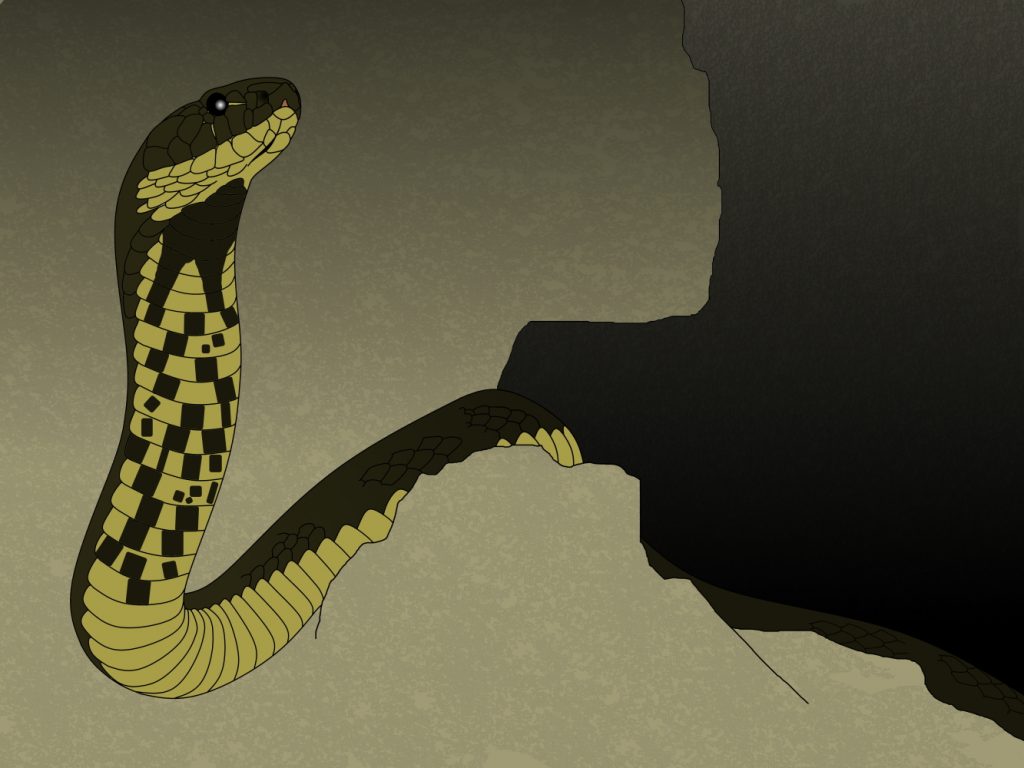
Welcome to the first Paleo Profile! These posts will give you information about a particular kind of prehistoric animal, along with pictures, links, and other resources. Sometimes the post will focus on a specific species, like this one, and other times they will be about a whole genus.
The Earliest Known Cobra
Naja romani, previously known as Palaeonja romani, (which scores big points for cool names, along with Arthrolycosa, Hynerpeton, and Radioactylus) was the earliest known Elapid, the group of snakes that includes not only cobras, but also mambas and coral snakes. Also known as the european cobra, Naja romani was the earliest known cobra, living in Europe approximately 24.5-8.7 million years ago. It was most noticeably different from modern cobras in that it didn’t have a hood. In most other ways, it was almost identical, though it was overall more robust, showing it was much more heavily muscled than today’s cobras. Its vertebrae were powerful, also being longer, but the ribs that they held could not flatten out to the sides to form the hood that makes cobras famous. Naja romani grew up to 6 feet (1.8 meters) long, though other remains show they rarely got that big. Naja romani was found in what was a karstic region, full of irregular limestone and erosion, which produced fissures, sinkholes, underground streams, and caverns. There were torrential rains, and these that may have played a role in fossilization. Naja romani probably fed on the many grass snakes that also lived here, similar to modern cobra’s diets. This snake was very similar to the King Cobra, though not a true cobra, a snake eater, so it is quite realistic to see Naja romani as a snake eater too. Naja romani is known from an almost complete skeleton, very rare for fossil snakes. This was probably thanks to the many sinkholes in the area, shared with birds of prey and bats. Naja romani went extinct roughly 8.7 million years ago, due to colder the climates beginning in Europe. Cobras would move west from Asia again, but this time into Africa, where the climate was warmer.
Sources
https://www.persee.fr/doc/mhnly_0374-5465_1939_num_15_1_980
https://paleobiodb.org/classic/checkTaxonInfo?taxon_no=38154&is_real_user=1
